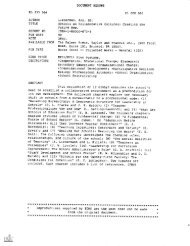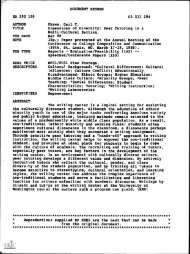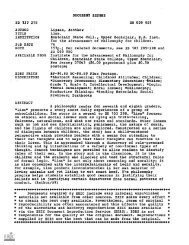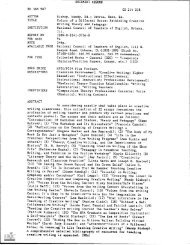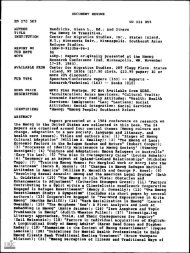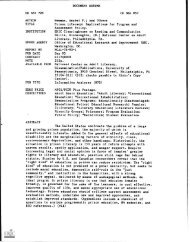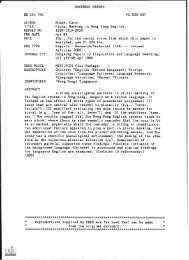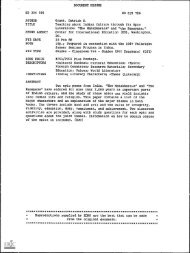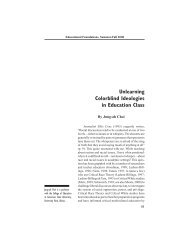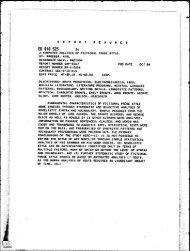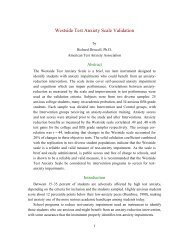Higher Education and Employment: An International Comparative ...
Higher Education and Employment: An International Comparative ...
Higher Education and Employment: An International Comparative ...
You also want an ePaper? Increase the reach of your titles
YUMPU automatically turns print PDFs into web optimized ePapers that Google loves.
<strong>Higher</strong> <strong>Education</strong> <strong>and</strong> <strong>Employment</strong>note the effects of socio-economic <strong>and</strong> educational characteristics on theearnings <strong>and</strong> success in the career of the graduates. This can show whatrole education plays in the redistribution of income among graduates,which is one of its important functions, according to the human capitaltheorists.Most of the analysis has been based on simple cross-tabulations,frequency distributions <strong>and</strong> chi-square statistics to calculate the degree ofassociation among different characteristics. For the earnings functions, onecan carry out regression analysis. Once the list of hypotheses has beendetermined (based on the checklist of questions mentioned previously) <strong>and</strong>the method of analysis decided upon, the data on the graduates arecollected by means of a questionnaire survey conducted with a representativesample of employed graduates. The details of the sampling technique<strong>and</strong> the organization of the survey are given in the next section.The employability of graduates also depends on the relationshipbetween the employers <strong>and</strong> the institutions of higher education, <strong>and</strong> therecruitment <strong>and</strong> promotion system practised by the employers. Theimportance of the different methods of recruitment is determined bysurveying a sample of employers giving them a scale of reference for eachmethod. The mechanisms which could improve the interaction between theemployers <strong>and</strong> the institutions are identified with the help of a checklistof such mechanisms, asking the employers to give their score for each ofthem. The difference in the recruitment <strong>and</strong> selection criteria for differenttypes of labour market (public, private, etc.) can be analysed with crosstabulations<strong>and</strong> chi-square statistics. For different types of labour market,the mechanisms of interaction may be different. This can also be identifiedby the score each type of labour market assigns to the different mechanisms.The average score with the st<strong>and</strong>ard deviation may indicate thepreferred mechanism for each type of labour market.Differences in wage structure influence the choice of a job by thegraduates. <strong>An</strong> analysis of the minimum starting salary of the different typesof employer <strong>and</strong> the criteria for fixing the minimum salary provides usefulinformation for analysing the relation between salaries offered <strong>and</strong> thelevel <strong>and</strong> type of education. This analysis is again done by simple crosstabulations<strong>and</strong> chi-square statistics, <strong>and</strong> the computation of average <strong>and</strong>st<strong>and</strong>ard deviations. Finally, an analysis is made of the concordance of theperceptions of the employers <strong>and</strong> graduates regarding the characteristics ofa job, to identify areas where the degree of mismatch is excessive so that theimportance of better interaction among the employers <strong>and</strong> employees canbe shown by empirical evidence, <strong>and</strong> methods of corrective action can bedevised. This analysis is done by assigning scores to each one in a set ofidentified characteristics according to its importance in making the jobsatisfactory. Simple measures of association are used as statistics for thisanalysis. The data on the employers are collected in the same way as dataon the students <strong>and</strong> graduates.24331,



